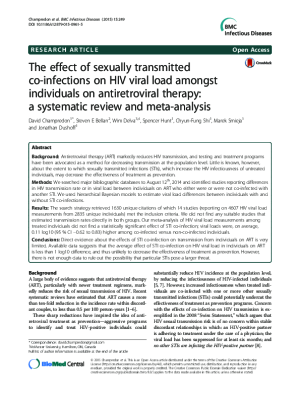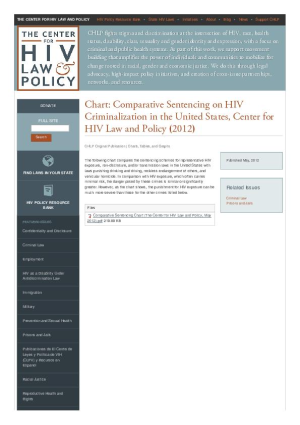Полиция, правоохранительные органы и ВИЧ
Специальный выпуск JIAS, содержащий примеры того, как полиция и гражданское общество могут построить взаимное доверие и работать в партнерстве для обеспечения реализации безопасных, чувствительных и инклюзивных программ по ВИЧ.
Этот документ был переведен с языка оригинала с помощью DeepL Pro (технологии перевода на основе искусственного интеллекта), чтобы обеспечить доступ пользователей Академии правосудия по ВИЧ к большему объему контента. Мы отдаем себе отчет в ограниченных возможностях машинного перевода и не гарантируем точности переведенной версии документа
The effect of sexually transmitted co-infections on HIV viral load amongst individuals on antiretroviral therapy: a systematic review and meta-analysis
Analyses 14 studies to find evidence about the effects of STI co-infection on transmission from individuals on ART is very limited. Available data suggests the average effect of STI co-infection on HIV viral load in individuals on ART is unlikely to decrease the effectiveness of treatment as prevention. However, limited data precluded ruling out the possibility that particular STIs pose a larger threat.
Comparative Sentencing Chart on HIV Criminalization in the United States
This chart, published by the Center for HIV Law and Policy in 2012, compares U.S. legislation on sentencing for HIV exposure, non-disclosure, and transmission with laws punishing drinking and driving, reckless endangerment of others, and vehicular homicide, showing HIV exposure frequently carries far higher sentences than more dangerous crimes.



